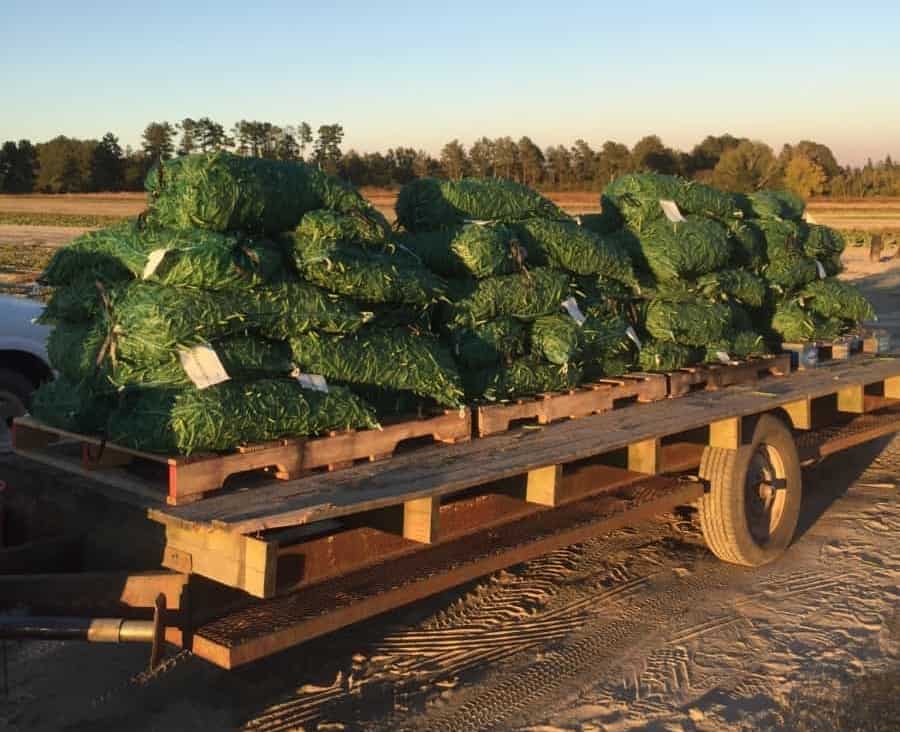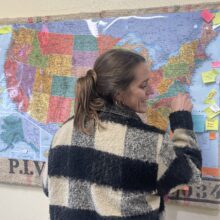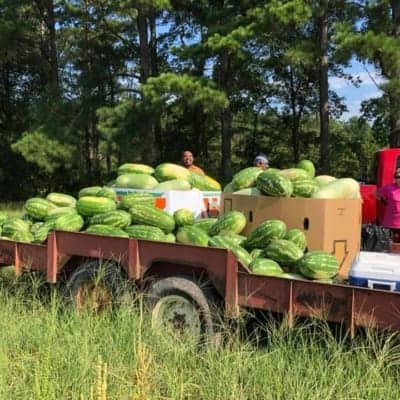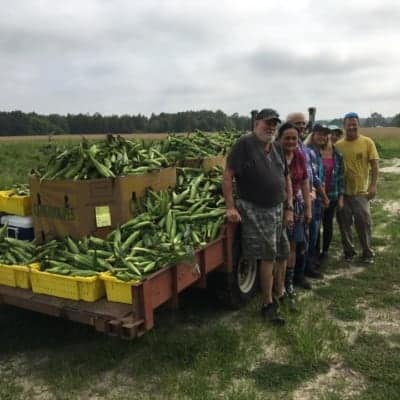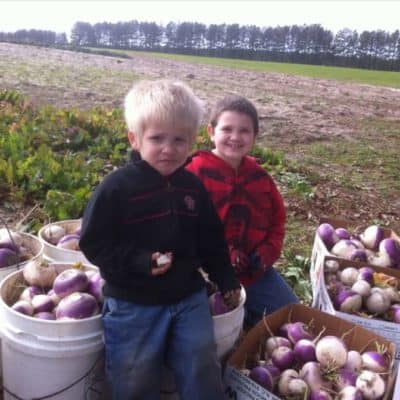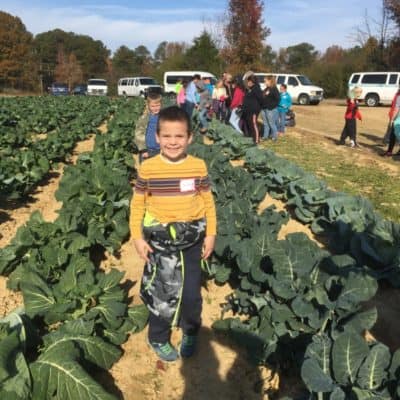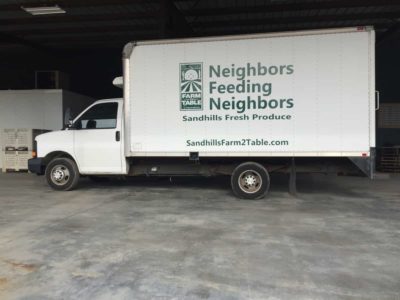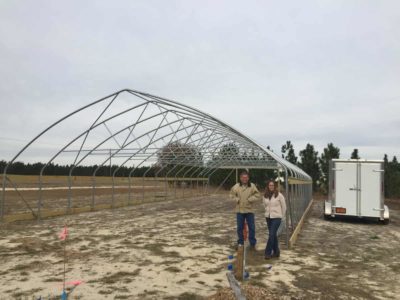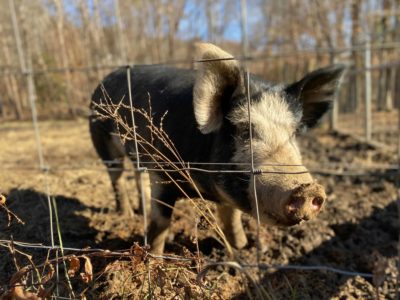This is the fourth piece in a series on the intersections of faith and food. Read the first piece here, the second piece here, and the third piece here.
One day in 2008, the people of Candor Presbyterian Church were having a luncheon and talking about the economic downturn. They wanted to do something for their community and those in need. As they were sitting around a table eating, one congregation member, Mac Clark, suggested they do a raised garden.
“He donated the first acre of land for the first garden, and he donated his only son — me,” jokes David Clark, the manager of God’s Garden.
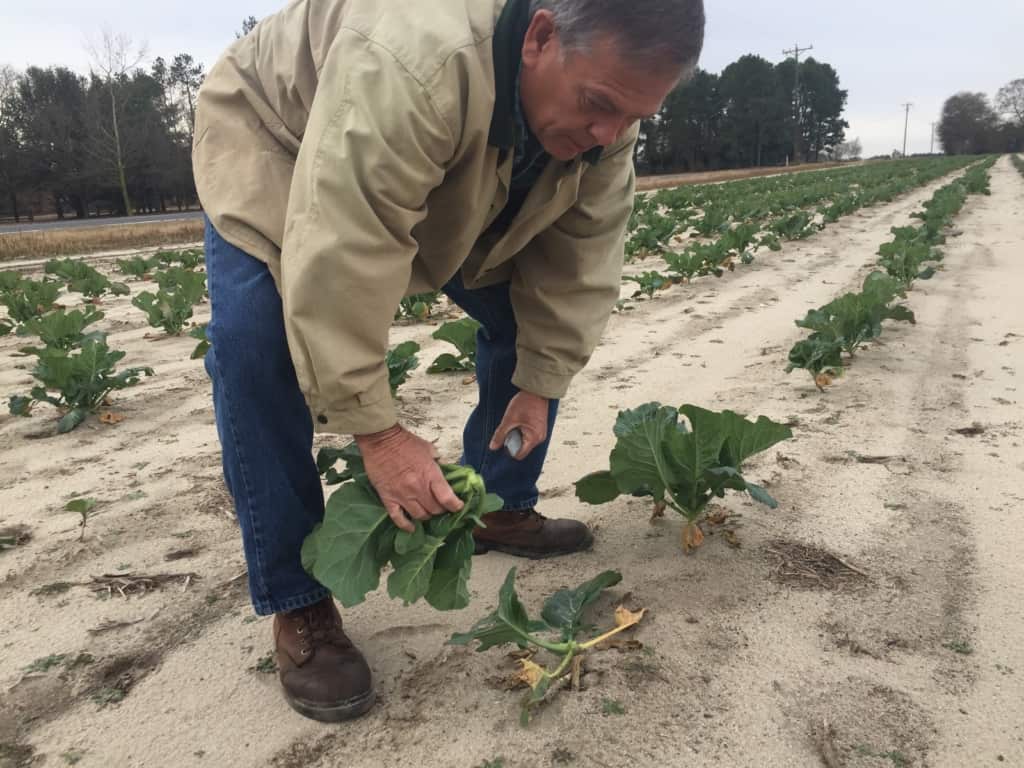

That one acre has grown into much more. Just this summer, God’s Garden produced 325 lbs. of broccoli, 665 lbs. of squash, 5,100 lbs. of green beans, 4200 pounds of corn, 3,700 pounds of peas, and 9,835 pounds of watermelon for the 2019 season. They have also harvested bok choy, swiss chard, beets, fennel, turnips, collards and a whopping 2,150 pounds of sweet potatoes. As of Nov. 25, there is still more to collect out on the fields.
From gardening to farming
In the beginning, this operation looked like a true community garden space, explained Clark.
“We were planting like a family would plant their garden,” he said, meaning small quantities and everything harvested by hand. This took a lot of time and energy, and produced only a little bit of food.
Over time, they recognized they could do things on a larger scale with the right equipment, and with the same amount of effort, they could yield much more. They mechanized and quickly found that instead of producing “handfuls of stuff, we were producing tons of stuff,” remembered Clark.
One of the biggest items they purchased that revolutionized the production process was the bean and pea harvester. Through a grant from The Duke Endowment, they were able to get the harvester and increase operations.
David gives us a throwback to one of their harvest days! This bean and pea harvester was purchased through a @DukeEndowment grant. Not only did it cut their harvest time down, but instead of handfuls of crop, they were able to get tons. Look at them green beans! @EducationNC pic.twitter.com/b3KM2KvnFp
— EdNC_Faith (@EdNC_Faith) December 7, 2018
What does a typical green bean harvest day look like?
The green bean harvest process starts in late May and goes to late November. Three to four volunteers go out with mesh bags to collect the produce, while someone hooks up the tractor to the bean and pea harvester. The picker picks green beans off, and volunteers begin to sack. Meanwhile, others are taking those mesh bags, once full, and stacking them on pallets sitting on a trailer.
With the machine’s help, volunteers can usually pick 40 to 60 bushels an hour. Simultaneously, a refrigerated food truck from the food bank is waiting on the field, so they can start loading up. When harvest is finished, the truck is taken to the Food Bank of Central and Eastern North Carolina in Southern Pines, where the food is distributed to different food banks in the area.
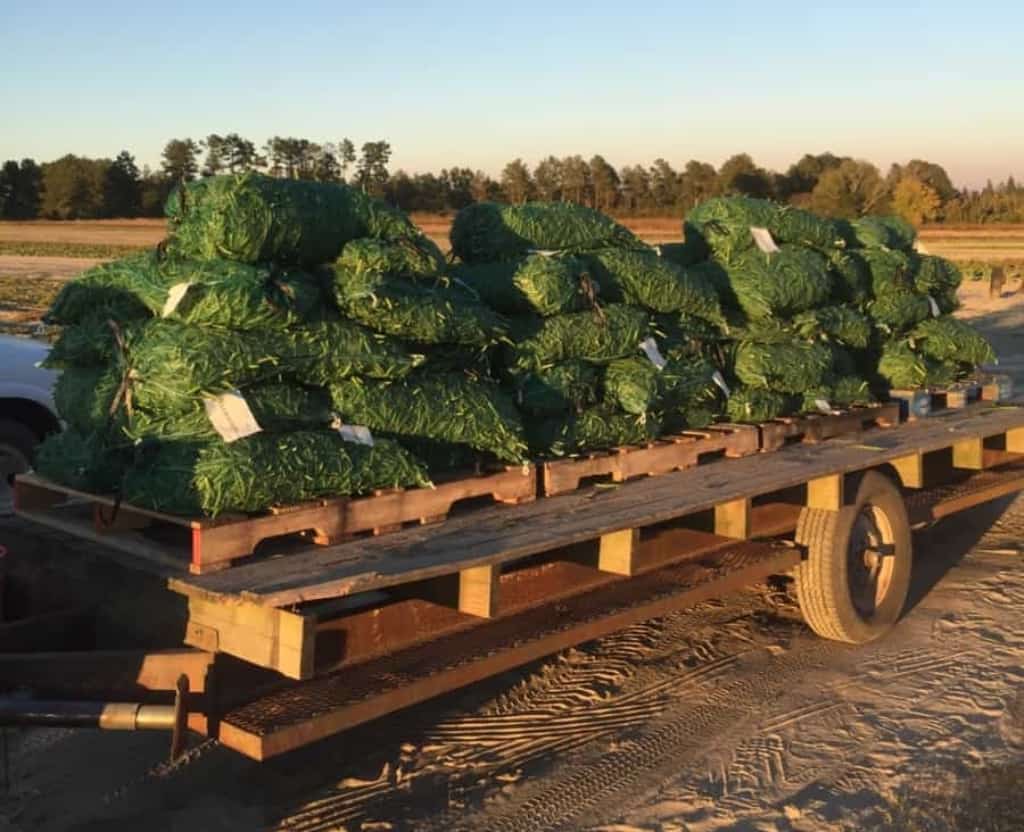

Clark, who’s full time time job is in printing sales, says the “generosity of the community has been just overwhelming.” Volunteers are mainly used during harvest days, as the training is easier and you get a lot of value out of their time. People come from area churches and civic organizations. Even employees of the North Carolina State Forest Service donate their time. Retired and active farmers loan equipment and give advice, as the soil in the region produces its own challenges.
Challenges and solutions in the Sandhills
The two biggest challenges God’s Garden and local small farms face are equipment and soil. The area’s soil has a low fertility and the profitable crop has altered overtime. Clark says, “Agriculture in our area is changing dramatically. It has shifted from tobacco and peaches, fruits and vegetables, to pine trees and poultry.”
This shift has made the area more of a food dessert with less farmer involvement.
“We can do more than just provide food for the needy in the area,” said Clark.
That’s why God’s Garden supports local farmers by partnering with the Sandhills Farmers Cooperative, Sandhills AGInnovation Center, and Sandhills Farm to Table. He says with those three groups, he can “see what we can do to help do some revival of agriculture [to] help to the next generation of farmers.”
Paige Burns Clark, county extension director for Richmond County, is a horticulture agent and provides technical assistance to God’s Garden. Touring the AGInnovation Center, she explained how it was renovated, but has been around since the 1970s as a pack shed for produce.
Next door is a high tunnel and demonstration garden, which works to educate local farmers on uncommon produce that suits the soil. The AGInnovation Center received a grant from NC A&T to build the high tunnel, and God’s Garden uses grant money from Resourceful Communities to purchase supplies and equipment to help grow crops. They like to showcase for local farmers new production practices and grow non-traditional crops like fennel, bok choy, and spinach.
When talking about the local farm scene, Burns Clark said that it’s important to think regionally.
“In order for us to see some regenerative agriculture, we have to be looking at a regional model. Markets are cross-county, land is cross-county. We really have to sort of ignore those those county lines and work together on a regional basis in order to be successful,” she said.
Editor’s note: The Duke Endowment supports the work of EducationNC.
